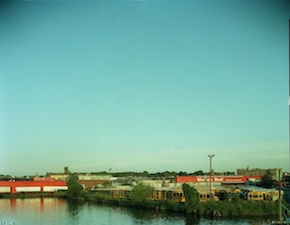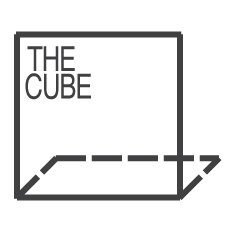
LIU Ho-jang
Lives and works in Taipei, Liu “uses his photographs as a kind of currency, a transaction, between the people he photographs and the audience.” (Michael Brakke.) Oftentimes his work focuses on documenting the token of an event that has already happened, or observing those who were involved in the event and their behaviors. The image then created from the event can be seen as a reflection of contemporary society. Liu views the absurdities inside our social system with a seemingly subtle and sorrowful but ironic attitude.
Goods exchange
I presented my work Goods Exchange at the 2005 Taipei Public Art Festival. This work involved interacting with the local hawkers and small eateries that had existed for a long time. I approached them and distributed information about this “public art” event. Offering to photograph their food, I suggested giving them my light boxes later in exchange for the food they sold.
The concept of the work is to explore the political implication of “public art”: how the city administration uses “public art” to reverse the residents’ expectations of the authorities.
The food that I photographed is consumer goods in everyday life that has always been sold without any media marketing. For the local residents, the food and the snack shops are like a street corner that they pass by every day, subconsciously constituting part of the landscape.
I use the light boxes to symbolize the intervention of a commercial mechanism, just like the mediation of “public art”. The unexpected presence of the light boxes at the shops will arouse residents’ curiosity about this intervention, and stimulate conversations between the shops and residents. It is also a metaphor for the sudden intervention of public art in the community.
On the other hand, “food” suggests an expiry date, or a kind of temperature. Does “photography” also have an expiry date in contemporary society? I try to explore the possibility of representing both of these meanings through images. When food is at its most appetizing, it also starts to rot. It is like the world that I understand, with everything being constantly renewed. Food is an epitome, and a manifestation within the frame of photography.
After I exchanged the light boxes for food with the hawkers, it was served to the people at the opening of the Public Art Festival. I reflected on the “public space” of the hawkers, which was returned to its functional starting point. At the same time, it caused me to meditate on the function and role of the artist in society.
Eastern Chicken – We Know the Neighborhood
The title of this work is derived from my residency in New York in June and July 2010, during which I photographed the Maspeth Creek in the suburbs where my studio was at the boundary between the Brooklyn and Queens boroughs. I used the slogan of a large supermarket Western Beef famous for its meat products, “We Know the Neighbourhood”, as the title of my work and my inspiration. This supermarket adjoins one of the tributaries of Maspeth Creek. The areas around this artificial creek are the sites where huge supplies of raw materials are stored. I followed this creek and visited the spots where the water was stagnant along its tributaries, just like a pioneer looking for the source of a mountain spring. Using photography to “copy” the sites at different hours, I tried to highlight the possible gap between how future viewers imagine the images and what was really “seen” at the sites by the photographer.
The area is euphemistically known as the “Williamsburg Industry Park”. In the context of contemporary consumerism and industrial production system, the landscape of Maspeth Creek shows the “coordinates” and “level” of pollution. The neighbourhood I know from the route that I travelled is full of irony, where environmental ethics is taken over by consumerism.
The concept of “Eastern Chicken – We Know the Neighbourhood” originated from a collaboration with TheCube Project Space. Taking inspiration from the name “Western Beef”, I use “Eastern” to suggest the Far East, and “chicken” as the theme of the neighbourhood that I am going to explore. With TheCube Project Space as the base of development, I identify the shops selling chicken meat in the Gong Guan district of Taipei as the first stage of my exploration, in order to stimulate a joint discovery of the neighbourhood by the shops, the exhibition space and the artist. From September 5 to 30, I will show some images of “Western Beef”, while using the space as a temporary work platform to showcase the process, providing a work in progress and starting a dialogue.


